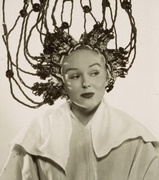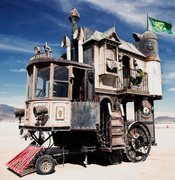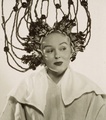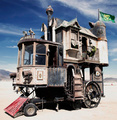Time was, humans didn’t have to worry much about getting exercise. When we had to kill, gather, grow, or herd our own food, working out happened naturally. Of course, as soon as we figured out how to avoid those laborious chores, we did. Not long after, we had to come up with new ways of staying in shape; hence, exercise.
“Kellogg had some unorthodox ideas about health.”
Exercising is an energy-draining and time-consuming process, so the minute we started making machines to do our labor, we also made machines to do our workouts for us. In fact, if it weren’t for Victorian ingenuity, such terrible places as the sweat-drenched neon-lit 24-hour gyms would not exist.
While some of their inventions evolved into modern gym equipment, many were as physically useless as they were absurd-looking. Despite what you might think, such pointless exercise contraptions are not just things of the past. In fact, most of them have modern counterparts that are sold on TV informercials today. Here’s a look at effort-free exercise gizmos through the ages.
Victorian Era
Swedish physician Gustav Zander is the man to blame for “the gym.” His Zander Institute, established in the late 1800s, featured 27 machines he designed himself to help his wealthy clientele improve fitness. Some of these were the forebears to StairMasters and modern weight machines. Others, like this ab-rolling machine (above) or horse-riding simulator (below), had little more physical benefit than a good massage.
In late 1800s America, Dr. John Harvey Kellogg was the chief physician at the famous Battle Creek Sanitarium in Michigan, a high-end health resort that inspired the 1994 movie, “The Road to Wellville.” Kellogg, who invented corn flakes and bran flakes with his brother, Will Keith Kellogg, the founder of the Kellogg’s cereal company, had some unorthodox ideas about health.
On the one hand, Dr. Kellogg introduced several revolutionary ideas that are widely accepted in medicine today: that diet and exercise are vital to good health; that intestinal health, supported by consuming fiber and probiotic yogurt, is essential to well-being; that sex can pass nasty diseases; that smoking can cause lung cancer; and that coffee can do serious damage. On the other, he advocated complete celibacy, female genital mutilation, electroshock therapy, eugenics, racial segregation, and even immersion in freezing radium-laced water as a therapy. Like Zander, he advocated massage machines as exercise, like this rolling device (above), which was used well into the 1970s, as a page from a 1977 JCPenney catalog shows.
Outside of crunchy cereal goodness, perhaps Kelloggs’ mostly lasting legacy is the concept of vibrating your way to fitness. Thanks to the marvelous development of harnessed electricity, he engineered a wooden vibrating chair (above) around 1900, which he claimed could clear out the intestines, dissolve backaches and headaches, and improve muscle tone. Apparently, this chair was so uncomfortable—painful, even—that no one wanted to use it. So much for sitting your way to slender! For the moment …
In 19th century, another scientific phenomenon that seemed just as magical as electricity was magnetism. This magnetized or “electric” corset, seen in an advertisement above, offered you not only a teeny tiny wasp waist but also a cure for indigestion, rheumatism, paralysis, and “general debility.”
The 1920s and 1930s
Corsets fell out of fashion in the Roaring Twenties, but inventors found other ways to incorporate bondage into passive fitness. This 1921 Molby Revolving Hammock (below) promised to stretch your muscles as it straightened your spine and calmed your nerves. For the ladies, there was the promise of an hourglass figure, with a smaller waist and “fuller chest.”
Naturally, people still loved the idea of sitting and letting the chair do the work. Zander’s horse-simulation concept made a comeback with this 1931 Mechanical Wondercycle Exercisulator (below), a “hobbyhorse for adults.” Text in “Popular Science” magazine asserted the trotting motion could work the muscles in the legs, back, stomach, and neck.
This 1936 mechanized Magic Chair (below) offered multiple ways for a lady to slim down and become more attractive by simply sitting. She could slenderize her waist by letting it twist her side-to-side, work away bulk from her ankles, and, finally, massage her chin to a small shape while stretching her spine and correcting her posture.
Even though we think of vibrating belt machines as products of the ’50s, they were first introduced in 1928, by none other than Kellogg’s health facility, as the Battle Creek Health Builder (below, right). Women wanting to attain a svelte flapper figure hoped to vibrate their fat away.
1950s, ’60s, and ’70s
Vibrating belt machines became even more popular when soldiers came home from World War II, as their wives and girlfriends put away their sturdy shoes and work dungarees and tried to look more like the bombshells of pinup magazines that kept the men company those lonely nights abroad. The style of the day (stiletto heels, Christian Dior dresses) required a smaller waist and bigger bust line. What about those ladies stuck with stubborn love handles? They tried to vibrate their way to a tiny waist, naturally. The innate silliness of these devices made for comedy gold—they were spoofed everywhere from cartoons to “I Love Lucy” to “Pee-Wee’s Playhouse.” Still, they remained popular well into the 1970s.
But when vibration wasn’t enough, women then turned to the next logical step: electric shock. The Relax-a-Cizor (below), first introduced in 1949, promised to zap the fat off. More than 400,000 of these babies were sold before they were taken off the market in 1970, due to some unpleasant side effects—apparently, the high voltage could cause abnormal heart rhythms, miscarriages, and aggravate hernias, ulcers, and epilepsy. This device made an appearance in the true-to-the-’60s show “Mad Men,” in which Peggy finds a much more interesting use for it than fat-burning.
Probably one of the most fun exercise-gadget fads of the era was inspired by Chubby Checkers’ 1960 dance craze “The Twist.” Manufacturers put together the simplest machines imaginable, made of rotating pieces of pressed particle board, and gave them fun brand names like Slim-Twist Exerciser, Twist Board, and Gyro Slim ‘n’ Trim Exerciser (below). You could put on a rock’n’roll 45 and twist your waist away with a li’l less effort than simply doing the dance.
Today
You’d think that by this point in history, we’d have learned that diet and exercise are pretty much the only way to lose excess fat and tone your muscles, and we’d quit with the short cuts like diet pills (the earliest contained parasites; the most recent were speed). We’d shake our heads and wonder why we spent all that money in the ’80s on minitrampolines and ThighMasters. You can only get sucked into buying the “Hip-Hop Abs” DVDs once before you realize, “Hey! This is hard!” And “Ow—my stomach hurts!”
Think the products above are hysterical objects of the past? Not so much.
High-voltage electroshock fat-burning devices may be illegal now, but we still like to twist. Modern twist devices are made out of high-tech plastics and metal alloys. You can twist crouched down like with the Ab Circle Pro (above)—endorsed by Jennifer Love Hewitt and fitness model Jennifer Nicole Lee—or standing up. Gym heavyweight Everlast makes a plastic twist disc, but I think I’d prefer this Japanese model (below), which also massages your feet. Because when I’m making the least effort possible to slim my waist, I also want to get a good foot rub in the process. Otherwise, why bother?
We also believe in the magic of vibration, but instead of using cumbersome machines to get our shake on, modern technology puts all that power into a portable fanny pack. Don this belt (below, left), and poof! You become bodacious babe or muscle-bound hunk, free of unsightly belly fat. Or maybe a little trembling action will make your weights (below, right) work better and faster on your quest for better arms.
Today’s Sauna Belt uses the mystic fat-busting powers of “infrared rays,” making it the modern equivalent of the electric corset. Not surprisingly, people with high cholesterol and heart trouble are warned against using that particular gadget.
My personal favorite, though, is exercising while sitting. Because, what? You want me to get up from my computer? And you know, sitting on a yoga ball bouncing at my desk all day is all right, but what fun is that when you can spend a lot more money and make your office a daily luau, with the waist-churning Hawaii Chair? Get me a ukulele and a grass skirt! I’m sitting my way to skinny!
What’s the most useless exercise machine you’ve ever seen or purchased yourself? Let us know below.
(Images: Photos from the Zander Institute in Stockholm, 1890s, from Tekniska Museet/National Museum of Science and Technology, Stockholm, via Cabinet Magazine; 1977 JCPenney catalog pages from 15 Minute Lunch; Molby Revolving Hammock ad from The Virtual Dime Machine; Mechanical Wondercycle Exercisulator and “Magic Chair” magazine ads from Modern Mechanix)






















 Baby's First Butcher Shop, Circa 1900
Baby's First Butcher Shop, Circa 1900
 Bizarro Beauty Products, from 1889 to Now
Bizarro Beauty Products, from 1889 to Now Baby's First Butcher Shop, Circa 1900
Baby's First Butcher Shop, Circa 1900 There Goes the Neighborhood: Mobile Victorian House Sets Sail for Desert
There Goes the Neighborhood: Mobile Victorian House Sets Sail for Desert Mari Tepper: Laying it on the Line
Mari Tepper: Laying it on the Line Nice Ice: Valerie Hammond on the Genteel Charm of Vintage Canadian Costume Jewelry
Nice Ice: Valerie Hammond on the Genteel Charm of Vintage Canadian Costume Jewelry How Jim Heimann Got Crazy for California Architecture
How Jim Heimann Got Crazy for California Architecture Modernist Man: Jock Peters May Be the Most Influential Architect You've Never Heard Of
Modernist Man: Jock Peters May Be the Most Influential Architect You've Never Heard Of Meet Cute: Were Kokeshi Dolls the Models for Hello Kitty, Pokemon, and Be@rbrick?
Meet Cute: Were Kokeshi Dolls the Models for Hello Kitty, Pokemon, and Be@rbrick? When the King of Comedy Posters Set His Surreal Sights on the World of Rock 'n' Roll
When the King of Comedy Posters Set His Surreal Sights on the World of Rock 'n' Roll How One Artist Makes New Art From Old Coloring Books and Found Photos
How One Artist Makes New Art From Old Coloring Books and Found Photos Say Cheese! How Bad Photography Has Changed Our Definition of Good Pictures
Say Cheese! How Bad Photography Has Changed Our Definition of Good Pictures Middle Earthenware: One Family's Quest to Reclaim Its Place in British Pottery History
Middle Earthenware: One Family's Quest to Reclaim Its Place in British Pottery History Fancy Fowl: How an Evil Sea Captain and a Beloved Queen Made the World Crave KFC
Fancy Fowl: How an Evil Sea Captain and a Beloved Queen Made the World Crave KFC
Lisa– great job on this article. Love all the vintage ads and pix. Must have been fun to research. There are some inventions that are so incredible, one wonders how they ever got past the prototype stage. The Hula chair has got to be a hoax! My Mom had the twist-board-thingy. She never used it, but we kids had fun playing with it.
Great stuff! Thanks for posting! One day I will write diet and exercise book titled “Eat Less and Walk More” and that’s what will be written on every page.
my aunt still has her gyro slim and trim. and uses it every day. and she is a good 91 years old.
Quite fun! This makes me thing of the annual New Years resolution. Love the Victorian-era pics in particular.
I was wondering if you have even tried any of this equipment. You say the vibrating chair was so painful that nobody wanted to use it. Well I have one of them in the museum that I work at and it is neither painful or a piece of equipment that is avoided. In fact, I have people that will start the vibration time and time again because it feels so great. Don’t take what you hear or read and write it as gospel. Actually try it before you write about it.
We need an update to cover current nonsense , for the home and the gym. For this it will be necessary to get into the mindset of clients, trainers, instructors ,promoters and sales people. Con artists and eager victims still abound. All the best , Fred
I like the valuable information you supply in your articles. I’ll bookmark your blog and take a look at again right here regularly. I am slightly certain I’ll learn a lot of new stuff right right here! Good luck for the next!
Can I purchase the vibrating Belt??? If so how much ?? or are there any in the workout places now????
In the 80’s, Gloria’s Marshal, diet centers use to have a table where it would lift your legs and arms. It was very comfortable. With her diet you really did lose weight and look good. Today on the Windy Williams show she talked about celebrities using something simular . I would like to see that.
Great job on this article.
Wondering if you would you have any idea where I could find any of these vintage items? After my poor choice of giving one of them away due to moving into a small NYC apartment, I’ve been searching for one for many years. How frustrating. In all my years (73 now) I’ve never had a better ab stretching machine, and I’ve had many… the ab machines now are quite cumbersome and not easy to use, and I’ve had several of those too.
As I said… just wondering… the items are:
Wonder Lounge Exerciser,
Stylee Lounge Exerciser or
Slim Gym which seems to be similar.
Would surely love to hear from you.
Have a great day.
Sincerely,
Maurisa
As a child I used some of this equipment when I visited my grandmother. The vibrating belts (introduced by Kellogg ) did increase circulation but that’s about it. I never lost any weight.
The gyro slim trim where you stand on it and twist back and forth was fun to do as a child and a pleasant way to pass some time while at grandmas but as far as working muscles that’s a complete farce! I’ve seen a few contraptions with the same concept and different spin on it and I’m sure they don’t work either. There’s just no easy way to get fit period
my late grandparents used to have the slim n trim..
we used to wonder what it was as kids
I have a roller massage machine that was given to my mother in the 1950’s. It has NS on it and nothing else. It looks similar to kelligs only all chrime rollers. Can u tell me what NS stands for? A member of the Baird bread company gave it to her. It weighs about 150 lbs.
At least 20 to 30 years ago I belonged to an exercise group in the Lehigh Valley, PA that was similar to Curves as it had traditional exercise machines. The difference was it had exercise tables that you laid on and the table moved! There were at least 4 or 5 different tables. For the life of me I can’t remember what the name of the place was called. With the combination of the traditional machines and the exercising tables I was losing inches off my waist and hips and thighs. Can anybody there tell me the name of the place?